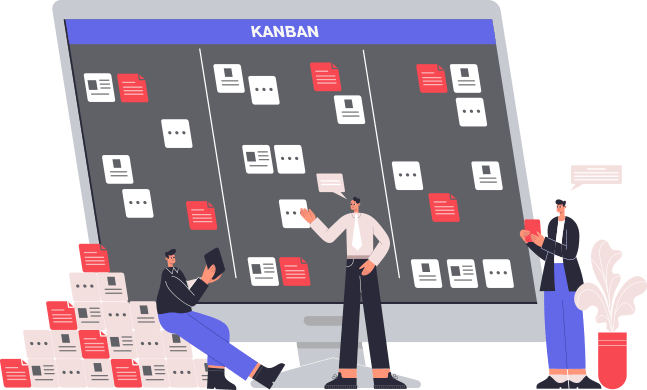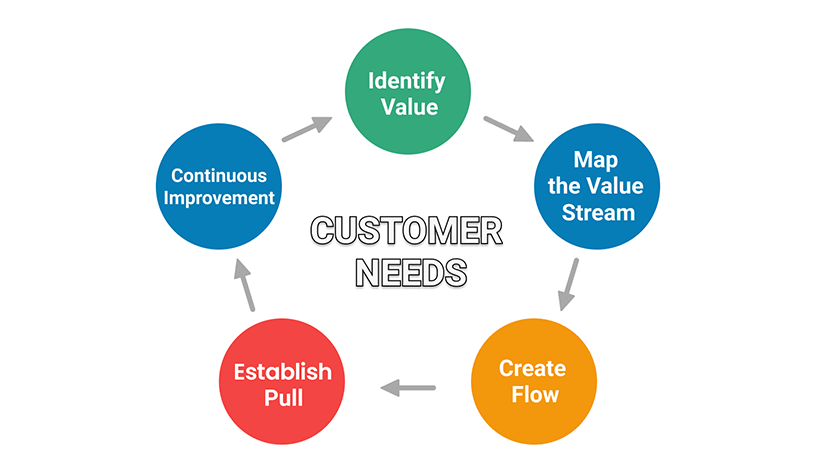
Click the button to start reading
The Ultimate Guide to Project Management for Startups & The Methods You Can Implement Right Now
Startups are the beginning of new services, platforms, or products that have the potential to bring true innovation to the market, fueling passions and creativity while simultaneously meeting the demands of consumers. The complexities of creating a business model that thrives in today’s society and appeals to its intended target audience is an immense and challenging vision, however, the inner workings of the business—the internal procedures such as project management—cannot be ignored if the startup is to grow and achieve success.
There are key components to making the vision for the startup a reality. This involves carefully implementing a system that prioritizes project management, making resources that help streamline coordination and collaboration among teams easily accessible, and creating a solid, reliable framework that focuses on clear communication and transparency in the workplace.
If you’re an entrepreneur with a budding team looking to begin your startup journey on the right foot, this article will help you understand why effective project management for startups is paramount to your core business practices.

Understanding Startups
Initially funded by their founders, startups are companies focused on providing the market with a specific product or service. Typically, these companies (or ventures) don’t yet possess a business model or sufficient capital to move into the next stage of business.
Other sources of funding can come from the entrepreneur’s family and friends who support the vision for the business or from venture capitalists who understand how valuable their service or product will be to consumers. A comprehensive business plan is crucial for developing strategy and future progression for the startup. This paves the way for the creation of the business’s mission and vision, objectives, internal standard operating procedures, and project development and implementation.
There are a few advantages to working at a startup:
- Increased opportunities to learn – Especially in the beginning stages, a startup usually has fewer employees, which means the existing team has an opportunity to learn a variety of different skills as they each tackle their own respective responsibilities and engage in a wide range of roles.
- Professional development – As the team will have these opportunities to participate in different areas of the business, they will be building a unique set of soft and hard skills in both their essential job duties and in a leadership capacity.
- Emphasis on workplace culture – Startups are generally more relaxed with an emphasis on a healthy, vibrant work culture that reflects the business’s core values. Prospective candidates (and those already part of the initial team) work towards reflecting these values in their communication, interactions, and work to help create an atmosphere that matches the overall vision for the business. Because of this, employee interactions are more common, engagement is typically higher, and there is a tendency to have better benefits such as access to childcare or having a shorter workweek as an option. Startups take care of their people so they stick around for the long haul, continue to drive progress for the business, and contribute their creativity to the process.
- More flexibility – Startups also allow their employees to run with their ideas with minimal supervision. Leaders or managers encourage their teams to use their talents and apply them in particular projects. This can certainly lead to rewarding career progression.
- Access to innovative work – Startup employees also have more flexibility, not only in their benefits but in the work they participate in. As the startup stage comes with consistent fluid changes, employees are allowed to use their creativity and talents as professionals to come up with fresh and inspired ideas that will help bring the product or service to market.

Along with the plethora of benefits that accompany working at a startup, there are also some disadvantages that we should also mention:
- High stress – Since the beginning stages of a startup focuses on positioning the company for success, this usually involves long hours for the team and extended periods of collaboration in order to get everything up and running. This can be a stressful period for everyone involved until they’re able to find stability.
- Increased competition – Depending on the market you’re trying to break into, a handful of startups may also be competing in the same industry, creating a relatively high volume of competitors with the same type of ideas. Competition for startups can be intimidating at first, but it can also be what pushes the team to be truly innovative, focused, and motivated to stand out in a crowded space.
- Potential for failure – As with all startups, there is a certain amount of risk when it comes to the overall success of the business, the need and demand for the product or service, its perseverance in the ever-changing market, and the flexibility and innovation from the core team. In order to win over venture capitalists to raise the money necessary to be in line with the vision for the company and keep investors happy, there is a constant need to prove that their brand is relevant, desired, and much-needed in today’s world. Progression and continuous forward momentum are key to keeping the business alive and, most importantly, thriving.
- Raising capital – After thorough market research has been done and the creation of a business plan that aligns with the projected vision, values, and objectives of the business, receiving the funding to bring the startup to life is another hefty challenge, but one of the most important steps in creating the startup company. Initially, funding comes from the entrepreneurs who have the idea they want to see brought to life, friends or family, and venture capitalists. Another source for funding would be loans from a bank or particular organization that can get behind the mission of the startup.
Understanding startups—and learning about both the advantages and disadvantages—will give you the foundation you need to understand why it’s important to streamline internal processes for various projects and implement effective project management in order to achieve success.

Why Project Management For Startups Matters
By the year 2027, most work will transition to being project-based (according to Bain & Company). And because this is the anticipated trend within the next few years, the demand to hire competent and skilled project managers has become a priority in the workplace.
This is because more and more companies are recognizing the importance of project management and the impact it can have on their employees and business decisions.
Project managers play a vital role in the success of the business and keep the team moving as a cohesive unit, and effective project management is how it’s done. On the surface, project management can be viewed as a way to track various assignments and keep within a designated budget, but there’s more to it than meets the eye – and this is especially true for startups who face consistent competition in their industry. Project management can keep a project organized from beginning to end, allows all individuals to plan and track all the data coming in and out, and keeps the team aligned and communicating through the entire process. Another added benefit of having efficient project management tools in place is building a transparent work environment in which the team feels like integral parts of the process and is reminded of how their contributions impact the bottom line.
Not only this, but the necessity of best project management practices in the workplace has become more important on a larger scale. According to the same Bain & Company article, the economy has become more service-oriented, and digital. This puts increased importance on speed and timing of delivery. Companies that cannot keep up with the evolving needs of consumers fall steadily behind.
So what does this mean?
Execution is important, especially in the initial stages of the startup to establish processes that actually work for the business, your goals, and the team. Effective project management practices can also act as a reliable framework when the startup is just getting on its feet. At this period, there is typically a lack of resources, time, and funding to be fully operational, so it’s essential to have better management to increase the odds of future success.
Let’s take a look at some of the existing project management methodologies that you can possibly incorporate into your startup.
Project Management Methodologies for Startups
It’s important to remember that the goal of choosing the appropriate project management practice is to find the method that works best for you and the team. It needs to be aligned with the goals of the business, the needs of the projects, and the startup’s core values.
Some of these methodologies work better for particular industries, such as software development, while others are considered more traditional approaches to project management in general. However, based on the needs of the startup, you may find yourself combining a few of these practices in order to meet your objectives. According to a 2021 Remote Project Management survey performed by Hubstaff, 39% of the surveyed companies had chosen hybrid project management practices.
Let’s dive into a few project management methodologies:

-
Agile methodology – True to its name, this project management practice is known for its flexibility and speed. The focus of this particular method is based on the principle that revisions need to happen in real-time and on an as-needed basis rather than having to wait until the end of the process to review and propose amendments. Originally created for fields such as software development, the method has been implemented in other non-software-related fields as well depending on the particular needs of the project.
Here are some of the key features of the Agile methodology:
- Frequent testing
- Short cycles of work
- Quick adaptation throughout the entire process
- Assessment in real-time
- Open to rapid change based on data
- Collaboration and problem-solving in phases
- Quicker results
- The project itself doesn’t need to have a predictable deliverable
- No strict deadlines are present
- Project results can change from initial onset
- Self-starters are on the team to roll with the frequency of testing and changes
- Stakeholders are required to be involved in the most, if not all, stages of the project
In essence, if your project doesn’t have strict deadlines, can be changed and modified in the course of its development, and needs to be done quickly without perfect results at first, then the Agile method may be worth a try. However, if you do have hard deadlines, need predictable results, and need to document the process for other members of the team, this method may not be for you.

-
Waterfall methodology – Counter to the Agile method, Waterfall is a more rigid approach to project management, having a linear and straightforward plan that outlines what needs to happen and when. This practice is sequential, relying heavily on each stage to be completed before the team can move on to the next one. The work cascades down, much like a waterfall. The focus of this singular approach is to develop a well-outlined plan and then execute on it, with the project manager in charge of the sequence of events. There is no going back to earlier phases of the project once that stage is completed.
Here are some of the features of the Waterfall methodology:
- The end result of the project is defined and is not expected to change
- There needs to be detailed documentation of the steps so that new team members can replicate results
- Your project is predictable
- You have a full view of all of the requirements of the project from the beginning
- There is no need for continuous testing or incorporation of feedback to amend earlier processes
- No requirement to change the process unless it is absolutely necessary and typically requires further approvals
- The length of the project is short
- Resources exist, such as technology, that can produce reliable results
Because of its strict structure, some businesses consider the Waterfall approach to be outdated and restrictive. However, it can prove to be a useful practice if predictable results are needed and there’s a tight budget and timeline.

-
Scrum – Scrum is an offshoot of Agile and is popular in software development for its simplicity and effectiveness in delivering fast results. Facilitated by a Scrum master, Scrums usually last approximately 2-4 weeks and utilize a small group of people to participate in focused “sprints” from a backlog of work. The purpose of Scrum is to improve the speed of delivery while also refining the communication with the team.
Here are some of the features of Scrum:
- Focuses on continuous improvement
- Individuals participating in the spring report on what’s in progress and various challenges
- Small, self-organized team
- Demos to identify issues
- Retrospectives at the end of each meeting
While Scrums are primarily used in the software development field, the principles and framework can be utilized in other industries as well to improve team communication and problem-solving. Again, it depends on your particular needs and the resources currently available to you.

-
Kanban methodology – Kanban is another form of the Agile method and was originally designed for the manufacturing industry. It’s a visual representation of project phases, using what’s called a Kanban board, cards (or stickies), and columns to establish progression in daily work.
Here are the features of the Kanban method:
- A visual separating one work item per card or stickies to help the team understand what everyone is working on
- Columns are also drawn to denote a specific workflow. Cards then flow through the workflow until it’s complete. For example, there can be a column for to-do, in-progress, or completed.
- There’s a maximum number of cards that exist in one column at a time, so the team works to make sure that new cards can be moved through the workflow ensuring continuous progress. This can also shine a spotlight on workload.
- Easily accessible status updates
- Projects are relatively straightforward with fewer stages and fewer complexities.

-
Scrumban methodology – As the name suggests, this practice is a combination of Scrum and Kanban. It takes the fundamentals of Scrum, such as planning, review, and retrospectives at regular intervals, priorities on demand, analysis, and backlog queues and weaves into the visual components of the Kanban methodology. This includes improving continuous workflow but also keeping in mind team capacity and workload, WIP (Work-In-Progress) limits, short lead times, diagrams to identify opportunities and weaknesses, and cycle times.
Here are some of the features of the Scrumban method:
- Teams who use this method need the structure of a Scrum but the flexibility and visualization of the Kanban
- A practice of more agile methods and principles and adopts the as-needed approach versus the strict sprints
- Teams transitioning from Scrum to Kanban
- More adaptive approaches to planning
- Optimizing processes and collaboration for teams used to a Kanban practice in the workplace
- Adds flexibility to teams used to Scrum processes
Typically, this methodology is used in the product development field, but can be applied to situations where requirements are constantly evolving and if maintenance work on a project is an essential part of the process.

-
Lean methodology – The Lean method’s primary focus is to minimize waste while maximizing value. Originally, this method was also used in the manufacturing industry (specifically in Toyota production), however, it can be incorporated into different settings to create efficient processes. The principles of the lean method consist of 3 fundamental pillars: Muda, Mura, and Muri.
Muda refers to wastefulness and the consumption of resources without adding value. Mura is defined as “unevenness, irregularity, or lack of uniformity.” This can look like having many inefficient processes or too much inventory. Muri means overburdened, which deals with the stress in both the team and resources.
Here are the features of the Lean methodology:
- Prioritizes being laser-focused on delivering value
- Cut the fluff so that processes are simpler and more effective
- Reviews what may be considered “wasteful” so that the business can run through projects smoothly
- Lowers costs overall
-
Critical Path methodology – This method involves identifying all the important tasks that need to be completed for the project and scheduling them accordingly. Additionally, there needs to be an estimation of how long each task will take before the team can move through the workflow. With this information, you can then determine the most effective and quickest way to achieve the end goal. This is considered to be your “critical path.”
Here are the features of the Critical Path method:
- Projects are more complex in scope
- Deadlines that the team must adhere to
- Relies on dependencies
- Identification of the most important task and prioritizing them over others for quicker delivery
- Little room for change in processes
-
Outcome mapping methodology – This particular methodology differs from other project management practices as its primary focus is on changing behaviors, rather than deliverables as a measure of progress. Developed by the International Development Research Center, this method prioritizes the impact and lasting change in its intended audience.
Here are the features of the outcome mapping method:
- Used primarily in charity, research, and communication
- Focuses on social change and longer transformations rather than the amount of product being delivered
- Behavioral outcomes drive the project’s mission and goals, rather than about the finished products
- Consists of a detailed planning phase and design with thorough tracking of progress
This is not considered a typical form of project management, however, if the values and objectives of the business align with creating positive social change, then this method would be a good practice to implement.

How to Choose the Best Methodology for Your Startup
There are a ton of methodologies to choose from, and that can seem like an entirely overwhelming process. Choosing the right practice for you—the one that has the potential to make a positive impact in your startup—depends on what your business needs are and the resources you have.
To help you choose the right one for your organization (and the right fit for your team), you need to ask yourself some fundamental questions:
- How big is your organization currently?
- How complex are your projects? Are they smaller in scale? Larger in scope?
- Can projects change during the course of the process? Or do you need reliable, rigid results?
- What are your expectations for final deliverables?
- What are your goals and objectives for the startup within the next 30,60,90 days? How about in 1, 3, or 5 years?
- Who are the clients you wish to serve? How involved will they need to be in your projects?
- How is the startup currently set up?
- What is your budget? What limits are in place because of any existing budget restrictions?
- What is the timeline and turnaround expectations for anticipated projects?
This examination of your current business model will help to reveal which methodologies you can begin rolling out to your team. Remember that you certainly blend different practices together according to the tools you have at your disposal. There isn’t a right or wrong answer here! If practicing a specific project management process doesn’t produce the results you’re looking for, it’s okay to take a step back and revisit what other techniques may be more productive and manageable.

Project Management Tips To Follow For Your Startup
To avoid a plateau or stagnation in your startup, here are a few project management tips for you to keep in mind as you work to keep your business fresh.
- Always plan ahead – One of the biggest benefits of planning ahead is saving time especially in such a competitive landscape. Proactively thinking ahead can get you thinking about your project needs before they happen, stay on task, and focus on milestones that matter.
- Practice flexibility – The market is constantly changing, with the demands fluctuating. As with all endeavors, plans don’t always go according to plan, and it’s important that you have the capacity to pivot quickly. Expansive thinking and adaptability will be the key motivators for your startup’s success.
- Have the right people in the right seats – You need a team that will support the business in all aspects, which means they need to have the right knowledge and skill sets to produce strong results. They’ll also need to be aligned with the vision for the business, or they won’t understand what they’re striving for. The right people will naturally contribute to a positive working environment.
- Be realistic about budget, scope, and time – All of these matters can set the stage for project implementation and affect the way you or a project manager makes decisions. It’s important to be crystal clear about what budget the team is working with, how small or large the scope of the projects will be, and when they are expected to be delivered. No detail is too small. You should have all the moving parts to paint the whole picture. Additionally, they should be a reflection of the startup’s overall goals.
In Conclusion
Project management for startups is a vital piece for its success. There are many methodologies that can be game-changers for your processes.
The most important consideration is this: choose the one that works best for you, your team, and the vision for the business.
















